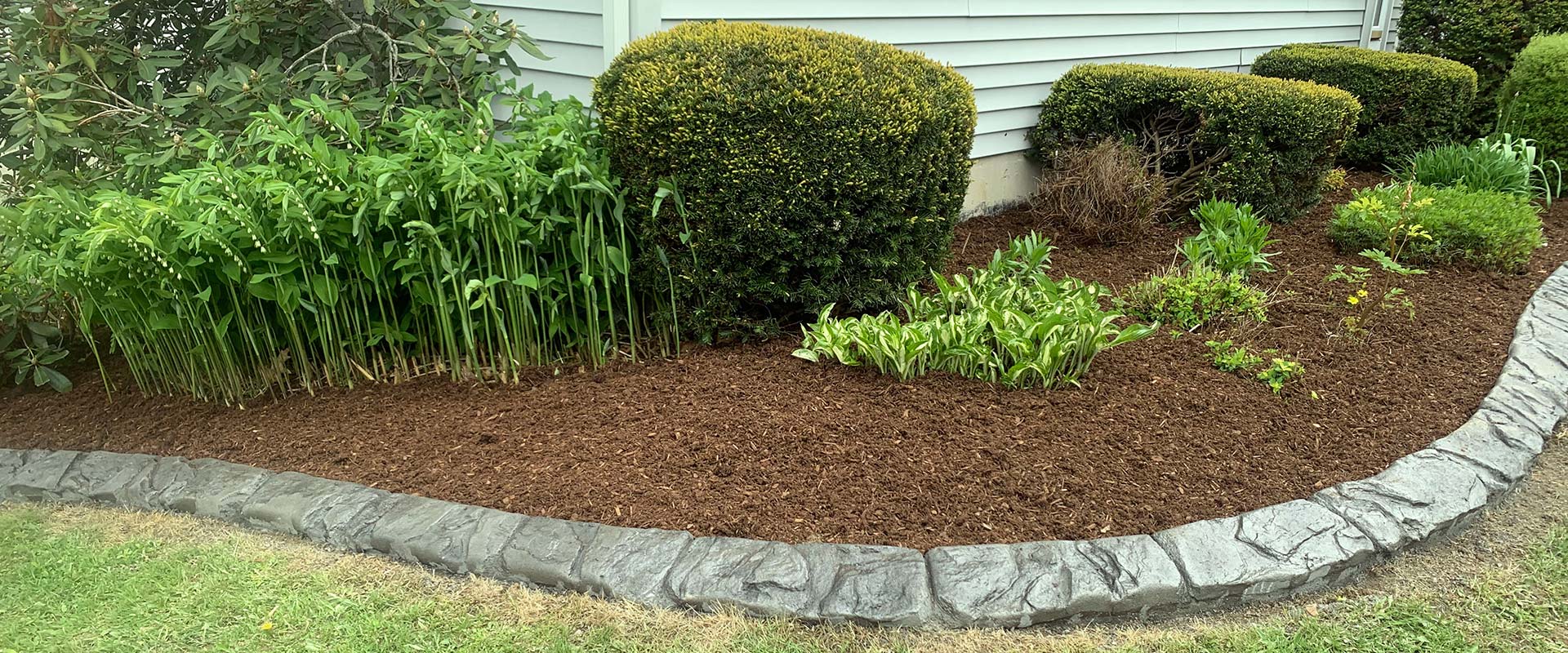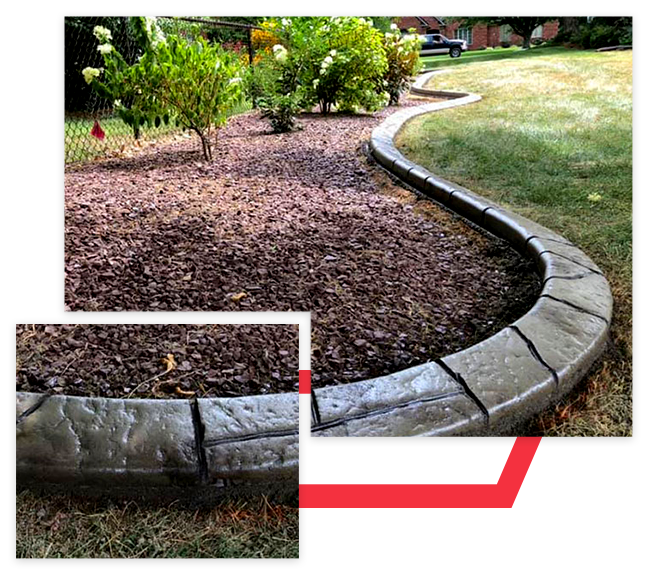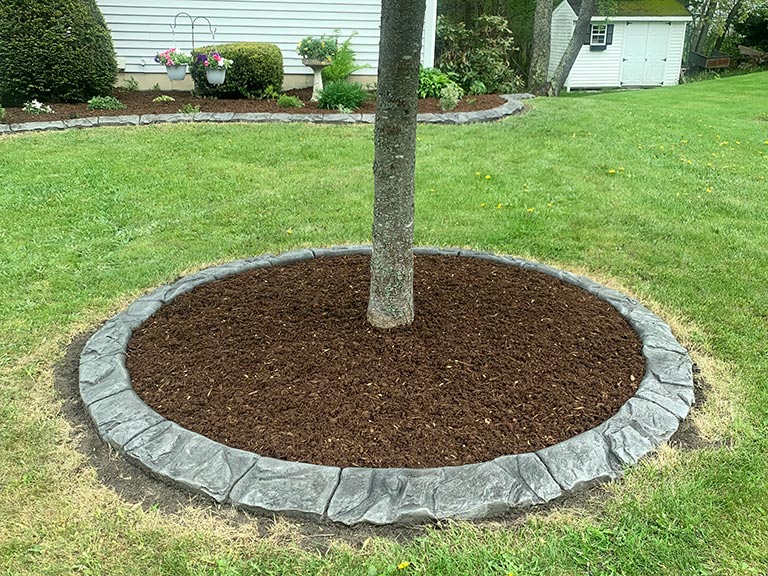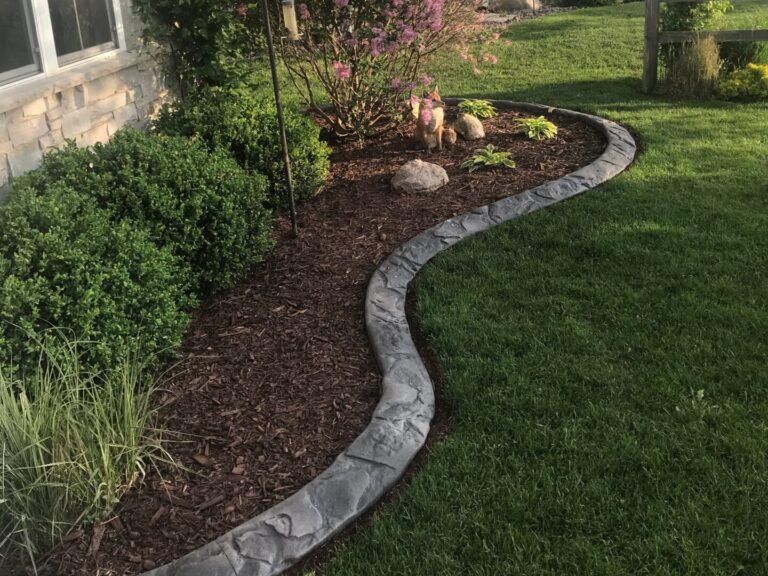Are you looking to enhance the beauty of your garden or landscape? Decorative concrete edging might be just the solution for you! As someone who has spent countless hours experimenting with landscaping, I can tell you that decorative concrete edging not only adds charm but also offers practical benefits that every homeowner should consider. In this comprehensive guide, we’ll explore the different styles, installation methods, pros and cons, and much more.
What is Decorative Concrete Edging?
Decorative concrete edging is a versatile landscaping technique that utilizes concrete to create a border around gardens, pathways, flower beds, and driveways. Unlike traditional landscape edging materials like wood or plastic, decorative concrete offers durability, aesthetic appeal, and customization options.
Why Choose Decorative Concrete Edging?
- Durability: Concrete is resistant to rot, pests, and weather elements.
- Low Maintenance: Unlike wood or plastic, concrete requires minimal upkeep.
- Customizable: Available in various colors, textures, and patterns to match any landscape style.
- Enhances Curb Appeal: A well-defined edge can transform the look of your garden.

Styles of Decorative Concrete Edging
When it comes to decorative concrete edging, the options are as varied as your imagination. Here are some popular styles to consider:

1. Stamped Concrete Edging
Stamped concrete mimics the appearance of natural stone, brick, or tile. This style adds texture and uniqueness to your landscape, making it a favored choice.
2. Colored Concrete Edging
Utilizing colored concrete allows you to match your edging with your home’s exterior or garden features. The color options range from earthy tones to vibrant hues.

3. Exposed Aggregate Edging
This style showcases the natural stones in the concrete mix, providing a rustic yet polished look. It works beautifully in naturalistic settings.
4. Curved Edging
Curved concrete edging can soften the appearance of your garden beds and create a more organic feel. It’s perfect for creating a flowing landscape design.

Installation of Decorative Concrete Edging
Installing decorative concrete edging may seem daunting, but with the right tools and preparation, it can be a rewarding DIY project. Here’s a step-by-step guide to get you started:

Tools and Materials Needed
- Concrete mix
- Water
- Edging forms (plastic or metal)
- Concrete trowel
- Level
- Brush for texture (optional)
- Release agent (optional)
Step-by-Step Installation Process
- Plan Your Design: Use stakes and string to outline the desired shape and length of your edging.
- Prepare the Area: Clear the area of grass and debris, ensuring a stable base for your concrete.
- Set Up Edging Forms: Install the edging forms securely to maintain the shape of the concrete as it sets.
- Mix Concrete: Follow the instructions on the concrete mix to create a workable consistency.
- Pour the Concrete: Fill the forms with concrete, ensuring it’s level with the top of the forms.
- Finish the Surface: Use a trowel to smooth the surface. Add texture if desired.
- Remove Forms: After the concrete has set (follow this based on your mix instructions), carefully remove the forms.
- Curing: Allow the concrete to cure for at least 24 hours (longer in cooler temperatures).

Tips for a Successful Installation
- Choose a dry day for installation to ensure proper curing.
- Consider using a release agent if you’re planning to stamp or color the concrete.
- If you’re new to concrete work, practice on a small area first to get comfortable with the tools and process.
Pros and Cons of Decorative Concrete Edging

Like any landscaping option, decorative concrete edging has its advantages and disadvantages. Here’s a breakdown to help you decide if it’s right for your project:
Pros
- Long-lasting: Concrete can last for decades when properly installed.
- Stylish: Enhances the overall look of your landscape.
- Versatile: Can be molded into various shapes and styles.
- Environmentally Friendly: Made from natural materials and does not harm the environment.
Cons
- Initial Cost: Higher upfront cost compared to other edging materials.
- Requires Skill: Needs some level of skill for installation; may require professional help for best results.
- Cracking Potential: If not properly mixed or cured, concrete can crack over time.
- Weight: Being heavy can make transportation and installation more challenging.
Comparing Decorative Concrete Edging with Other Edging Materials
To help you visualize the differences, here’s a comparison table outlining decorative concrete edging versus common alternatives:
| Material | Durability | Maintenance | Cost | Appearance |
|---|---|---|---|---|
| Decorative Concrete | High | Low | $$$ | Customizable |
| Wood | Medium | Medium | $$ | Natural |
| Plastic | Low | Low | $ | Limited styles |
| Brick | High | Medium | $$$ | Classic |
Frequently Asked Questions About Decorative Concrete Edging
1. How long does decorative concrete edging last?
With proper installation and maintenance, decorative concrete edging can last 20 years or more.
2. Can I install decorative concrete edging myself?
Yes, installing decorative concrete edging is possible for DIY enthusiasts with some experience. However, enlisting professional help ensures optimal results.
3. What colors are available for ornamental concrete edging?
Concrete can be dyed in a wide range of colors, from earth tones to vibrant shades, allowing you to match it with your landscape.
4. Will decorative concrete edging crack?
While concrete is durable, it can crack if not mixed or cured properly. Ensuring proper installation will minimize the risk of cracking.
5. How do I clean decorative concrete edging?
Regular cleaning can be done with a pressure washer or a garden hose. For stubborn stains, a mild detergent can be used.
Conclusion
Decorative concrete edging is a remarkable way to enhance the beauty of your outdoor space while providing functional benefits. Whether you’re going for a rustic look with exposed aggregate or a sleek finish with stamped concrete, there’s a style to fit every aesthetic. As someone who has successfully integrated decorative concrete into my landscaping projects, I can confidently say that making this investment is worth it. Not only does it improve curb appeal, but it also adds value to your property.
As you embark on your landscaping journey, consider incorporating decorative concrete edging. Happy landscaping!